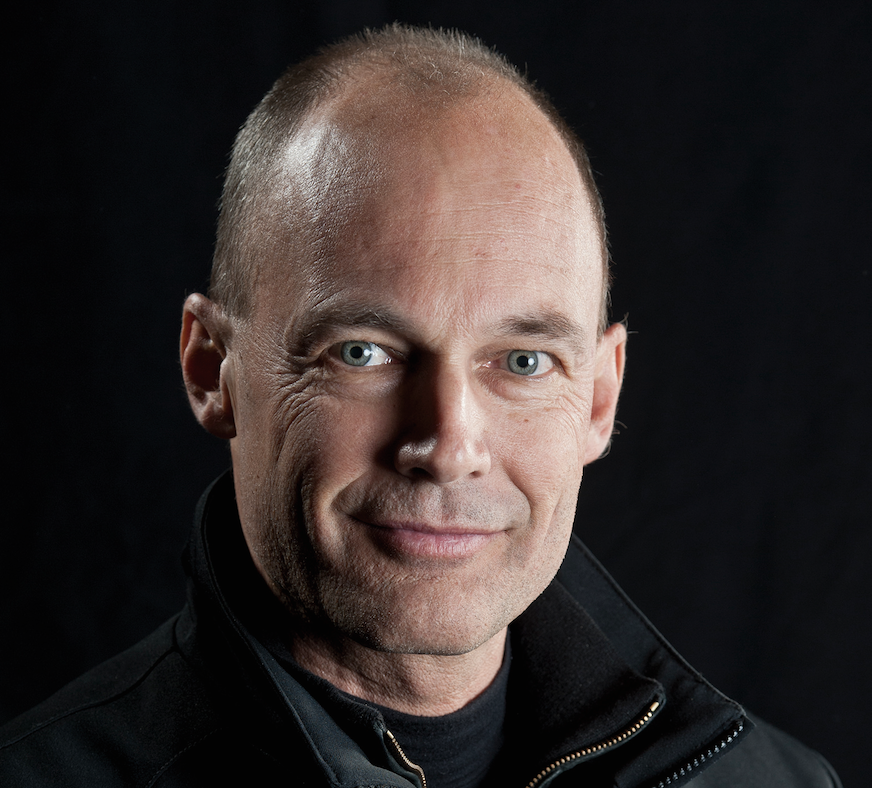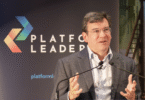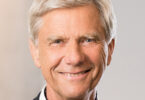Bertrand Piccard is a serial explorer, psychiatrist, and clean tech pioneer. Following his successful around-the-world flight in a solar-powered airplane. Piccard and his Solar Impulse Foundation have succeeded in identifying more than 1,600 solutions that can protect the environment in a financially profitable way. His aim now is to introduce these solutions to governments and companies and help them to accelerate the transition towards a zero-carbon economy. Piccard is a frequent speaker at the United Nations, the European Commission and the World Economic Forum, and his commitment has earned him several nominations, including Champion of the Earth and Goodwill Ambassador of the United Nations. He recently spoke to The Innovator about the business case for energy efficiency.
Q: You collaborated with the European Commission on a report called “Energy Efficiency The Silent Money Maker. What is the report’s objective?
BP: The Green parties are far too often presenting the protection of the environment and climate action as something boring, expensive and sacrificial. It is the reason why there now is a backlash against ecology and against climate action. In his September speech at the UN [General Assembly U.S. President Donald Trump called climate change ‘the greatest con job ever perpetrated on the world.’ This is the logical consequence of the bad communication the Greens have had about ecology and climate action. If it is expensive and sacrificial of course politicians and the financial world are going to fight against it. We absolutely need to change the narrative. This is why we created this publication for the climate conference in Dubai at COP 28. We are creating a new narrative that does not talk about decarbonization. It focuses on modernization because modernization is about making our world efficient, profitable and competitive. Let’s say decarbonization will become the logical consequence of modernization. So how do we modernize? We modernize by replacing the inefficient, obsolete and polluting infrastructure by modern ones, by efficient ones. Of course, the first reaction is likely to be ‘this is going to be expensive and how are we going to afford it?’ This is why we produced this report to show how energy efficiency is a silent money maker because it leads to resource efficiency and can pay for itself and improve profit margins. To avoid any misunderstanding efficiency is not the same as austerity, which means you do less with less and is a sacrifice. We aim to prove that if we do better with less, it will cost less, and the profit margins will be bigger. This is why all the case studies we have published in the report are really important. If efficiency is overlooked, the real sacrifice happens silently: every year, two-thirds of the energy we produce is wasted. That’s $4.6 trillion lost – and 37 gigatons of CO₂ added into the atmosphere – more than the annual emissions of China, the United States, and India combined.
Q: Can you give some examples of why energy efficiency makes financial sense?
BP: If you optimize the route of an airplane, for example, you will save a lot of fuel. Norwegian Airlines has done this. It is using software that optimizes the route according to meteorology, air traffic control and power settings and the company saved €13 million a year. That is not insignificant. You can do the same with software that optimizes the traffic on the road to avoid traffic jams. Mobility presents lots of opportunities. The energy losses from internal combustion engine vehicles are staggering. Most petrol engines convert only 20% to 27% of
the fuel’s energy into actual movement – the rest is lost as heat, vibration, and noise. This means that every time you fill up at the pump, three quarters of that fuel is wasted before the wheels even turn. In contrast, electric drivetrains are significantly more efficient, converting over 90 % of electrical energy into movement, making EVs three times more energy-efficient than their petrol counterparts. Scaling up EV adoption, alongside improving the performance of remaining internal combustion engine vehicles through hybridization and lightweighting, can significantly lower the environmental footprint of the transport sector. Such a shift not only carries clear ecological benefits – reducing greenhouse gas emissions and improving urban air quality – but also brings economic advantages, including lower fuel costs and enhanced energy independence.
Industry, which represents 37% of energy used in the world, also represents an opportunity. You still have very, very old infrastructure systems. A young company called Eco Tech Ceram is recovering wasted heat from the chimneys of factories, saving 20% to 40% of the energy bills of the manufacturers. Another example is that industry uses electric pumps for powders, liquids or gases and if they want to regulate the flow, they increase the resistance in the pipe, but the pump is still running full power. Companies like Schneider Electric offer software that act directly on the pumps to reduce the waste of energy. You also have systems that make it more efficient to work with compressed air. In the construction industry Bekaert, a Belgium company produces steel staples that are mixed into the concrete, allowing construction sites to use much less concrete and much less iron, allowing them to build with 40 % less resources, a huge savings. It is important to note that not only startups but big companies like Schneider and Baekart and Bouyges are working on energy efficiency solutions. I take this as a good sign because the opportunity for energy efficiency in industry is immense. Today’s economically viable measures could cut global industrial energy use by up to 30%. With the rapid development of new technologies, this figure could rise to as much as 60%, slashing emissions and delivering major cost reductions for businesses. As we have outlined in our report, the global industry could save around $437 billion annually from 2030 through energy efficiency improvements alone – while simultaneously cutting 4 gigatonnes of CO₂ emissions each year.
Q: Many young clean tech companies need subsidies to reach price parities. What sort of policy changes are needed to help these solutions scale?
BP: Not all clean tech startups are profitable. This is why the Solar Impulse Foundation has focused only on identifying economically profitable solutions that protect the environment and exist already today. We have now 1650 of those solutions. They don’t need subsidies. They just need clients. We have observed a really interesting thing. You have companies providing solutions targeted towards clients that could benefit them and save money and reduce their energy bill in a huge way. But very often the clients are not confident that the solutions will work, they don’t want to invest, they decide to do it later and have no legal incentive to do it, so what happens? They lose money every day and do nothing. The Solar Impulse Foundation has decided to work with the European Investment Bank and the European Commission to build a financial instrument that would be a third-party payer. This way a startup can approach a factory, for example, and tell them you can install our system for free- you pay nothing – and a part of the saving you’ll make will be paid back to the investment instrument that has funded it. This is what we call efficiency-as-a-service. It is like a servitization {The delivery of a service component as an added value] The client pays for service and not for ownership and they pay only according to what they save.
If you are an investor – especially an institutional investor – the tools you have in your hands today are shares, bonds, private equity, hedge funds and real estate. We are offering a sixth opportunity – servitization– which will generate between 4% and 8% of returns per year which is very good, not for a good speculator, but for a pension fund it is exactly what they need.
Q: When was this launched and where are you on the project’s trajectory?
BP: We announced it on stage, together with the European Investment Bank and the European Commission, at the COP 29 in Baku in November of last year. We had another session at the European Commission two weeks ago and the EIB announced the goal was to support 350,000 SMES in Europe – the targeted users of the solutions – with €17 billion euros using the servitization system we have worked out together. Two lighthouse funds could be announced soon at COP 30 in mid-November.
Supporting startups is something you can always do but you never know what is going to happen. If you support the user of the solution, then part of what the user is saving goes back to the investment instrument of servitization and drives adoption at scale. What the startups need is clients, not only investors. Startups need to sell, so here they sell it to the investment fund that gives it for free to the user. I love that system because it unlocks the potential of all the efficient solutions that have been neglected until now.
This could allow the American president to say energy efficiency is a money maker, it creates jobs, it stimulates the economy and the financial world. It is a narrative that politicians need to hear. If you notice, in everything I said I did not use the word climate change in the narrative. It is all about efficiency, money making, clean technologies and cheap renewable energy. Since the year 2002 I have been fighting to prove that protection of the environment only happens when it is profitable – fighting to show how we can make it profitable – how we can make it attractive for the financial world, creating jobs and increasing profit margins thanks to efficiency.
Q: So, you have gathered over 1000 clean tech companies that are profitable or don’t need subsidies to prove your point?
BP: 1,650 solutions, to be exact, not companies. They come from all over the world, but we have a center of gravity in Europe where I live and have my network. Some of them are producing clean energy at a cheaper price than fossil fuels. Today the cheapest source of energy is solar and wind.
Q: Renewable energy often gets a bad rap because it is intermittent and can’t be counted on in colder climates. How do you respond to critics?
BP: It is true that a place like northern Germany it is not the best place for solar. But if you use solar in Texas, Arizona and New Mexico you have electricity all year round. And in geographies with offshore wind, you have energy the entire year. It is true that to rely on renewable energy you need to change a lot of things, and you have some people who are reluctant to change. This is why we need to inspire change by demonstrating that it works and it is profitable. I have always said that you need to be logical as much as ecological.
Q: After achieving the first navigations of the globe in a balloon and more recently in a solar aircraft, you are planning a new project: a green hydrogen powered airplane to fly non-stop around the Earth to demonstrate how it can help build a cleaner and more efficient world. You will have some convincing to do. In September executives of Germany’s leading manufacturing and energy companies warned that green hydrogen is still far too expensive compared to other fuels. The Chief Executive of German steel company Thyssenkrupp warned that unless the cost of hydrogen made from renewable energy falls the company would have to resort to using fossil fuels to run a steel plant that was intended to be its flagship green facility. What is your reaction to that?
BP: Remember the first mobile phone. It was the size of a suitcase, cost $15,000 and was a niche market. Today we all have one in the pocket. Twenty-five years ago, photovoltaics cost 40x more than today. Look at computers. IBM famously said there would be a market for four computers in the world. Now we have a couple of them in each house. It is foolish to say green hydrogen will remain too expensive, so we stick to fossil fuels. It is exactly the opposite that is needed. We need to make green hydrogen popular to have prices fall. We need to reach critical mass as soon as possible to get enough demand and enough offers to drop the price. My goal with Climate Impulse [the green hydrogen powered airplane] is to do exactly that by helping to make the hydrogen industry attractive.
I acknowledge that today a green liquid hydrogen airplane is not profitable, but the goal is to demonstrate it is possible, to make it attractive and push towards the affordability of green hydrogen. Let’s just say that with the1650 energy efficient solutions being promoted by the Solar Impulse Foundation I am in the present, while a big part of the world is in the past. With the Climate Impulse green hydrogen airplane, I am looking to the future.
This article is content that would normally only be available to subscribers. Become a subscriber to see what you have been missing.







